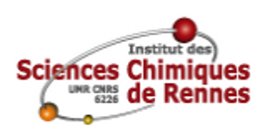X-ray diffraction, IR spectrum, optical properties, AIM, NBO, RDG, HS, Fukui function, biological and molecular docking analysis of a novel hybrid compound (C9H15N3)[CuCl4(H2O)]
Résumé
The paper reports the preparation and structural characterization of a novel hybrid complex (C9H15N3)[CuCl4(H2O)] grown by slow evaporation technique in aqueous solution at room temperature and characterized by X-ray diffraction, spectroscopy measurement, optical absorption, photoluminescence proprieties, Hirshfeld surface analysis, thermal and biological study. The title organic-inorganic material, (C9H15N3)[CuCl4(H2O)], crystallizes in monoclinic space group P21/n. The crystal arrangement consists of [CuCl4(H2O)]n 2n - chains spreading alone c axis at x = 1/2 and y = 1/2. To build the three-dimensionality of the structure, the organic cations are linked to the chains through hydrogen bond type N - H middotmiddotmiddotCl, OW1 - H middotmiddotmiddotCl and C - H middotmiddotmiddotCl. The new prepared compound was screened for its antioxidant activity. The Photoluminescence proprieties were also reported. The nature and proportion of contacts and the rapport of enrichment in the crystal packing were studied by the Hirshfeld surfaces. The vibrational properties FT-IR and UV-VIS spectral analyses of present compound have been researched by theoretical calcula-tions. Energy gap (Eg) of the molecule was found using LUMO and HOMO calculation. The local reactivity analyses (Fukui functions) were evaluated to identify the reactive sites in the protonated organic part. In-termolecular interactions were analyzed by molecular electrostatic potential surface (MEPS), the reduced density gradient (RDG), natural bond orbital (NBO) and topological AIM are reported. The thermal anal-ysis (ATD/TG) reveals the decomposition of title compound. The NBO analysis of title compound shows that the maximum energy is equal to 37.61 Kcal.mol -1 confirmed the charge transfer between organic and inorganic groups. The activation of thermodynamic parameters is calculated by DFT/ B3LYP/LanL2DZ. Photoluminescence measurements (PL) showed two peaks at around 331 and 393 nm. The biological ac-tivities of (C9H15N3)[CuCl4(H2O)] were investigated by DPPH and ABTS tests. Finally, docking studies have been conducted to predict 2PPCU anti-tubercular activity and as a potential therapeutic target for anti-cancer treatment against transaminase-Bio A and VEGFR-2 kinase inhibitor respectively type PDB's.(c) 2022 Elsevier B.V. All rights reserved.
Domaines
Chimie
Fichier principal
 Gannouni et al - 2022 - X-ray diffraction, IR spectrum, optical properties_MOLSTRUC-D-22-02909_R1.pdf (5.54 Mo)
Télécharger le fichier
1-s2.0-S0022286022017458-mmc1.pdf (1.16 Mo)
Télécharger le fichier
Gannouni et al - 2022 - X-ray diffraction, IR spectrum, optical properties_MOLSTRUC-D-22-02909_R1.pdf (5.54 Mo)
Télécharger le fichier
1-s2.0-S0022286022017458-mmc1.pdf (1.16 Mo)
Télécharger le fichier
Origine : Fichiers produits par l'(les) auteur(s)
